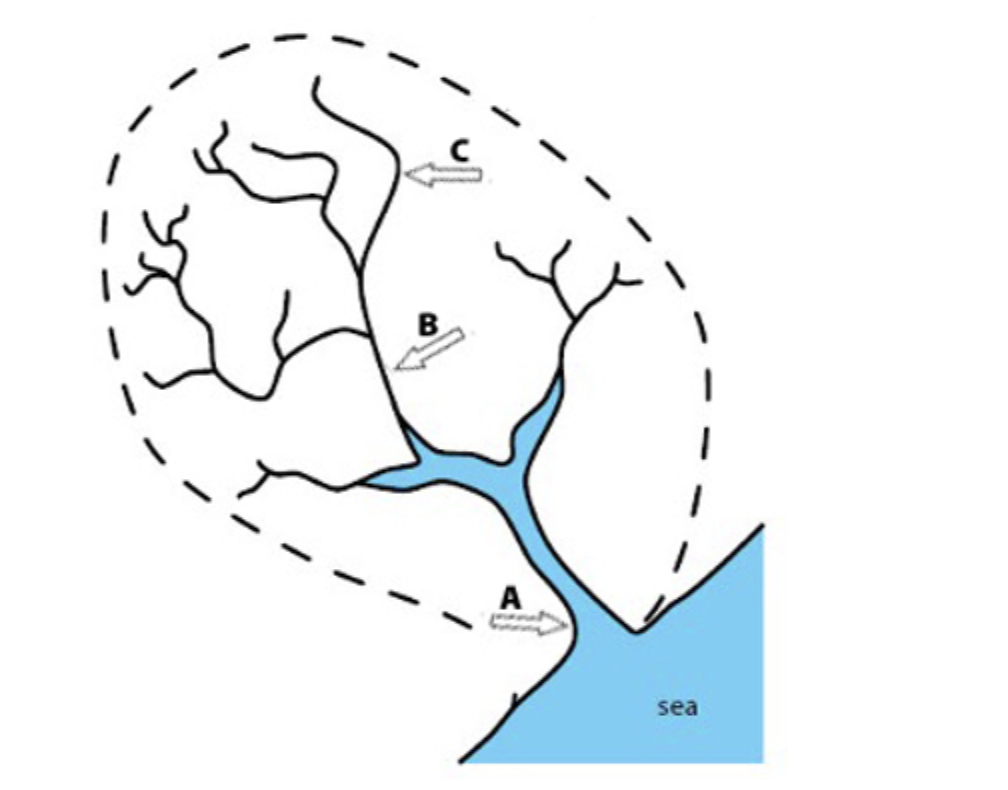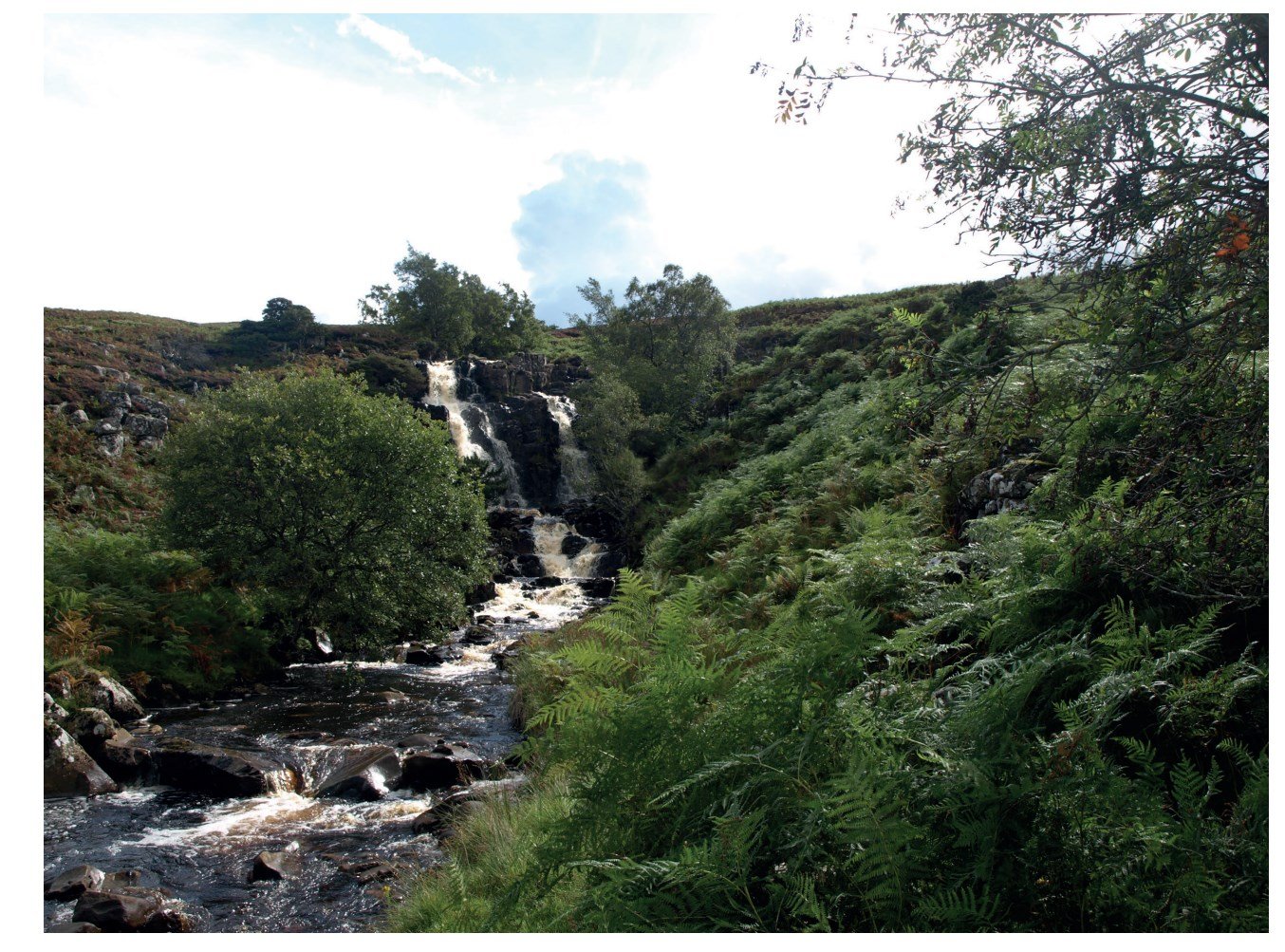Study Fig. 3.1, which shows a river drainage basin.

Fig. 1
Using Fig. 1, identify the following river features:
A = …………………………… [1]
B = …………………………… [1]
C = …………………………… [1]
evaporation
condensation
precipitation
interception
transpiration
1 – the change of water from a liquid to a gas (water vapour) due to heat from the sun ……………………………….
[1]
2 – when plants release water vapour from their leaves ……………………………….
[1]
Did this page help you?


















